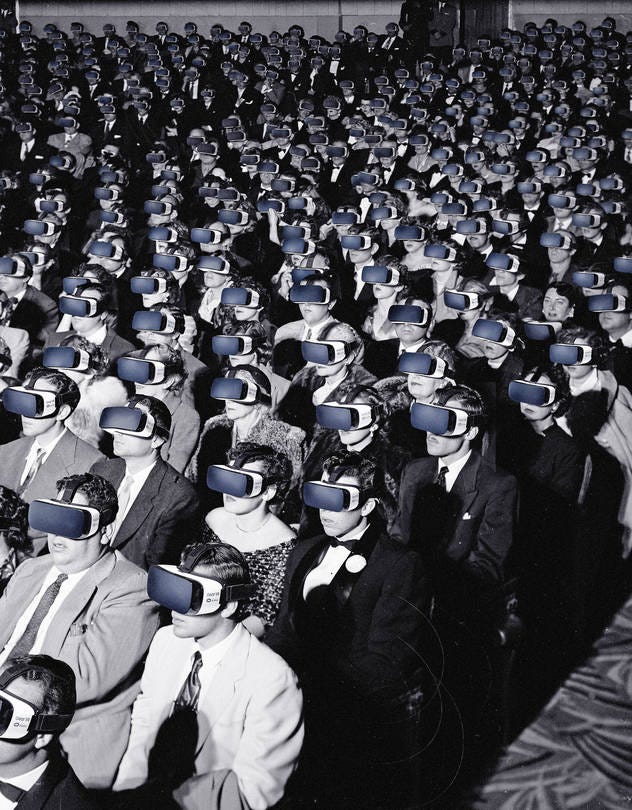The Omniscreen: Digital Childhood, Hyperconnection, and Loneliness
The dominance of digital in today's society
🏷️ Categories: Happiness, Loneliness, Social relationships.
We live in the era of permanent connection.
An eight-year-old child today has more access to information than a scholar of the past: they can talk to someone in Japan, play with a stranger in Australia, or see how a girl lives in Norway—all from the palm of their hand. But perhaps they’ve never climbed a tree, waited for a friend without a screen, or sat in silence without fearing boredom.
This may sound like one of those “back in my day” complaints, but it’s not.
I don’t feel nostalgic for a world without Wi-Fi. I have doubts about our digital future.
What kind of society are we leaving behind—and where are we heading?
The cave is no longer made of stone
Plato spoke of a cave. Inside, people watched shadows projected on a wall and believed those shadows were reality. Today, the wall is a screen, and the shadow… well, the shadow comes with filters, music, and maybe was created by AI.
It’s not that technology is the enemy—I don’t like thinking in those terms.
But I do think we’ve forgotten something fundamental: the richness of the material world.
Children are growing up in an intangible universe. The physical—the touch, the smell, the silence, the fertile boredom—is being replaced by filtered images, digital sounds, and stimulation that moves much faster than the natural rhythm of life.
They don’t explore the world—they consume content.
Jean Baudrillard argued back in 1994 that we live in a world of simulation, where representation replaces reality. If he thought that in 1994… imagine today’s digital space. It doesn’t just replace reality—it shapes our perception of it. Whatever the algorithm promotes becomes a goal to pursue and a trending topic; whatever doesn’t go viral is instantly forgotten.
The value of things is measured in interactions: likes, comments...
Martin Heidegger said that technology is never neutral. It always has intent. Today, that intent is called retention. The time you spend in digital space turns into monetized minutes of attention, sold in the form of data.

And what do children do? The same thing they see adults doing: staring at screens.
They learn about the world through a screen.
Showing before feeling
In Greek mythology, Narcissus falls in love with his reflection. Today, there’s no need for clear water. A front-facing camera will do. A filter. A pose. Millions live trapped in a digital mirror, seeking validation with every post and every like.
Social media has turned existence into performance.
It’s not about living—it's about showing that you’re living.
Adults do it, and children learn by imitation. Soon they understand that living isn’t what matters—what matters is documenting that you’ve lived. It’s not about feeling—it’s about posting what you feel. And so, childhood and adolescence become performances. They know which filter “looks better,” which pose gets more reactions. And slowly, play stops being play. They build their personal brand as if it were marketing.
Byung-Chul Han calls it the “spectacle self” (2015).
We’ve become used to believing we only exist if others are watching. Likes as food. Followers as proof of existence. But behind the perfect feed…
What’s left?

It’s the paradox of connection. Digitally hyperconnected, physically disconnected. Sadly, true connection requires touch, smell, presence… things that don’t fit in a 15-second vertical video.
Infinite scroll as pedagogy
The Greeks had an ideal: Paideia.
For them, Paideia was a holistic education that balanced body, mind, and spirit (Jaeger, 1942). In the past, play meant getting lost. Going out without a map. Making up rules. Breaking them. Getting bored. Fighting. Crying. Running. Falling. Rousseau defended the same idea: education based on freedom, contact with nature, and respect for the rhythm of childhood.
Today, the model is different—for both adults and children.
Childhood is hypnotized by stimuli, fast content, and instant rewards.
Many children today don’t know how to go five minutes without external stimulation. Just a few days ago, I was on a bus. In front of me was a young child with his mother. He couldn’t have been more than 7. For the entire 40-minute ride, he begged his mother for the phone. Forty minutes of uninterrupted pleading. “I’m bored,” “Give it to me,” “Please…” His mother said to her friend, “Look how he gets when I don’t give him the phone. And I barely let him use it…”
The digital environment they grow up in encourages hyperactivity.
His mother told him to look out the window at the landscape. The beach was beautiful, but the boy didn’t see it. He didn’t want to. He kept kicking and whining. The real world doesn’t move as fast as the screen. That’s why it feels so unappealing—it moves slowly and doesn’t offer constant changes.
Boredom, the old friend of creativity, is now the enemy.
Everyone hates it.
For Arendt & Kohn (2006), as with the Greek philosophers, to educate is to prepare the next generations to take responsibility for the world of tomorrow.
But what kind of legacy are we leaving behind?
Alone among thousands
It has never been easier to talk to someone—and never harder to feel truly heard.
Jonathan Haidt (2023) has studied how excessive social media use is linked to increased anxiety and depression in young people. These are the rising mental health issues tied to digital life. But beyond the statistics, there’s the daily feeling of emptiness. That kind of emotional hunger no like can satisfy.
Human relationships have lost their depth.
We no longer truly know others—we just interact with their representations, their avatars. That absence of human warmth can’t be fixed with emojis. And in that exchange of appearances, we lose the chance to build something truly valuable: a real bond.
Everyone knows the codes of digital communication, but few can hold a gaze.
Reconnecting isn’t going backward
It’s not about turning everything off and going back to the cave.
It’s about leaving the one we’re already in.
Leaving means turning off the phone for a while. Bringing back meals without screens where people talk. Letting a child get bored instead of filling their time with apps. Teaching that silence is also valuable. That there’s beauty in the clumsy, in the slow, in the unedited. That the digital doesn’t replace the real—it only complements it.
And for that, adults must lead by example. Be consistent.
You can’t ask a child to put down the phone if the one asking never does.
Will we keep raising overstimulated generations disconnected from the physical world?
Creativity. Empathy. Resilience. Courage. You won’t find these on a screen. You’ll find them where they’ve always been: in face-to-face relationships, in falling down, crying, and getting back up.
Will we keep living in caves lit by blue light—or will we step outside to see the light of the real?

✍️ Your turn: How much of your digital time is intentional, and how much is the result of retention tactics that burn hours without you realizing?
💭 Quote of the day: “I had never realized how much I needed the attention of others to confirm my own presence.” —Jerry Spinelli, Stargirl
See you very soon. Take care! 👋
References 📚
Arendt, H., & Kohn, J. (2006). Between Past and Future. Penguin.
Baudrillard, J. (1994). Simulacra and Simulation.
Han, B. (2015). The Transparency Society. Stanford University Press.
Haidt, J. (2025). The Anxious Generation: How the Great Rewiring of Childhood Is Causing an Epidemic of Mental Illness.
Heidegger, M. (2013). The Question Concerning Technology, and Other Essays.
Jaeger, W. W. (1942). Paideia: The Ideals of Greek Culture.
Rousseau, J. J. (2016). Emile, or On Education.





So true, all of this. I wonder how much difference there is between urban children and rural children. Satellites and high-speed cable have connected people everywhere, but in some places, children still get outside to be with animals, participating with their care as well as playing with them. Do urban kids have the same opportunities without the constant guidance of trained adults? It seems the free-range play disappeared in about the 80s when activities and sports programs were implemented to keep children engaged and safe.
Ray Bradbury wrote about this kind of life for kids back in the 1920-30s. His book, Fahrenheit 451, written over 60 years ago, includes interactive wall-sized screens. The main character was a fireman, but he burned books instead of putting out fires. The ending led him to a place where the book people lived. Each person memorized a book and constantly recited it. The book became their identity.
hi alvaro: another insightful piece. i remember reading plato's allegory of the cave, in high school. the slaves were raised in the cave seeing the shadows of real objects. when they escaped the cave, they could not cope with the reality they saw outside, in the sunlight, and returned to the cave. it's a powerful allegory. linking that allegory to today's screen-time is equally meaningful and apt, i agree. thanks for this excellent essay. keep going. ur fan, j.